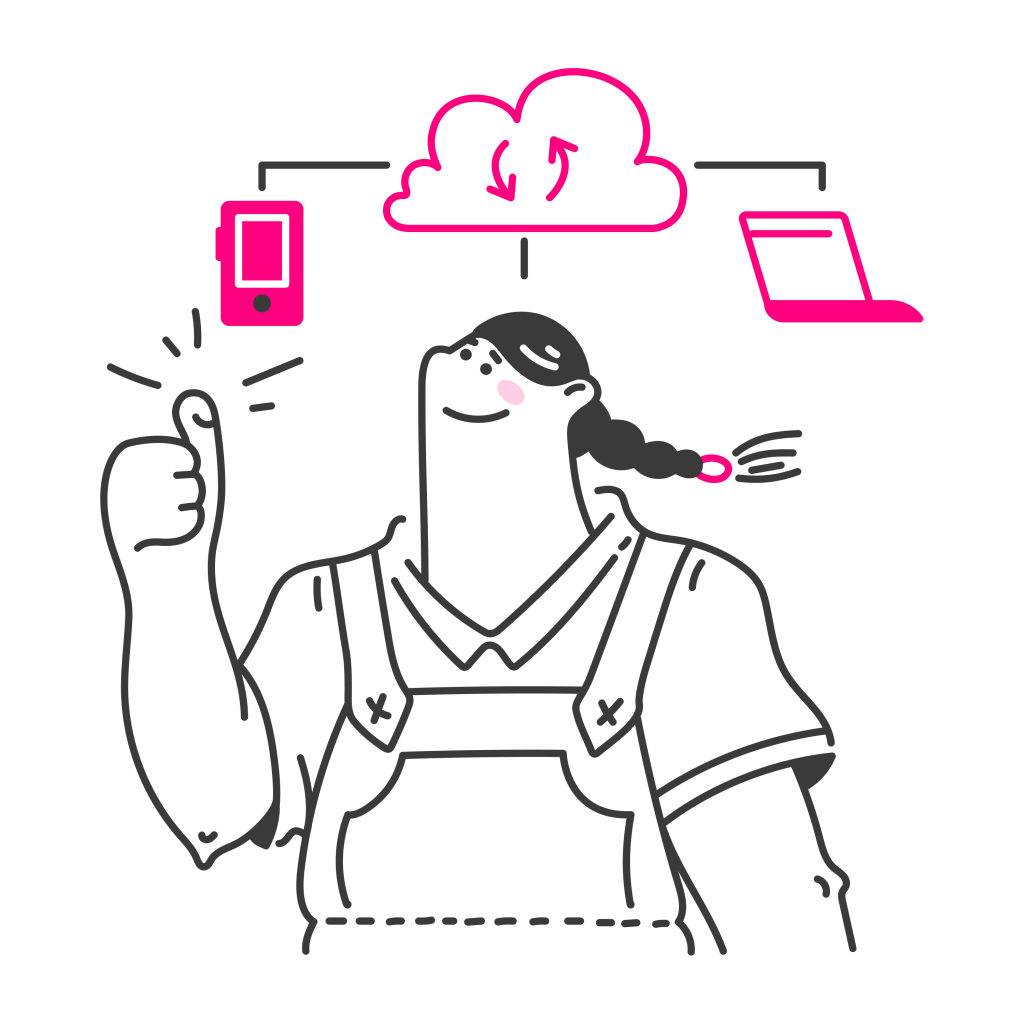Cyber threats pose grave risks to nonprofits in today’s digital age. From ransomware blocking access to sensitive records to phishing scams stealing donor information, these online attacks can cripple services and compromise user privacy. While securing networks and devices is paramount, nonprofits must also boost user awareness through ongoing training. A multi-layered strategy is needed to both prevent intrusions from the outset and limit damage should defenses be breached. In the following, we will outline several best practices that can help nonprofits effectively mitigate cyber risks through proportionate and vigilant precautions.

Understand the Threats
While familiarizing ourselves with existing cyber dangers is prudent, nonprofits would be remiss not to acknowledge the persistence of those wishing to do harm. Phishing schemes and ransomware plottings, not to mention distributed denial-of-service onslaughts – all threaten the important work of charitable organizations. However, with open eyes and willing minds, protections can be erected. Understanding the myriad methods of those perverse perpetrators allows good works to stand secure against the disarray decoys and data demands would deliver. Knowledge is the first and foremost shield when confronted by technologies’ terrors.
Develop a Security Plan
Once nonprofits gain deeper insights into the risks they confront, establishing a thorough security strategy becomes prudent. This plan should incorporate measures including deploying antivirus software, employing strong, unique passwords for all accounts, and assiduously applying security updates. Nonprofits also must ready contingency measures in case intrusion occurs.
Bolstering Defenses Against Digital Dangers
Small charities should weigh investing in security solutions like firewalls, intrusion detection systems, and malware defenses. Such technologies can shelter sensitive data from cyber threats. For comprehensive protection, nonprofits would be wise to retain expertise, having a consultant scrutinize existing practices, flag vulnerabilities, and recommend strengthened safeguards. Though costs exist, nonprofits neglect digital defenses at their operations’ and constituents’ peril.
Implement Multi-Factor Authentication
While multifactor authentication furthers security, non-profits often lack resources to adopt it. Requiring two verifications to access accounts, MFA compels users to offer evidence from discrete realms: something they know, like a secret passphrase; something they have in possession, like a mobile device receiving codes; or something inherent to them, like biometric identifiers. Though strengthening protections against illicit intrusion, implementation poses expenses that non-profits struggle to afford. Alternatively, lesser technologies coupled with judicious password practices and updated awareness outreach can still meaningfully harden defenses while respecting constraints. No solution perfectly suits all circumstances, yet even incremental improvements leverage existing means to lessen risks.
Encrypt Sensitive Data
While charities manage benefactor subtleties, for example, gift subtleties and worker records, monetary declarations must likewise be ensured. Information security includes scrambling this touchy information so exclusively approved clients can get to it. The scrambling cycle encodes information, making it indecipherable except if unscrambled with a mystery key. This guarantees information is shrouded on the off chance that unapproved get to happens or a digital assault succeeds in penetrating frameworks. Lengthier sentences, for example, this one join alongside more succinct sentences to give a more human example of composing. By making sure about each byte of touchy information put away by a non-benefit, they ensure the trust and security of their benefactors.
Training Employees on Cyber Security
Educating nonprofit staff on cybersecurity techniques is crucial for protection against online attacks. A multifaceted training program should communicate the significance of robust and unique passwords, enable employees to discern dubious electronic correspondence, and emphasize preserving personal details privately. In addition, employees require constant reminders to circumvent dubious hyperlinks and attachments included in correspondence, as these are occasionally leveraged to distribute detrimental programs. It is advised to routinely review cybersecurity protocols with staff so they remain informed of evolving threats and suggested strategies. Furthermore, occasionally incorporating longer, more elaborate sentences amidst concise descriptions helps strengthen engagement with important security concepts.
Using Secure Technology
While safeguarding a nonprofit from cyber threats is paramount, it necessitates employing fortified technologies. This comprises leveraging two-pronged authentication for the entirety of profiles and encrypting any sensitive particulars. What is more, it is imperative to confirm that all contraptions and programming are maintained updated with the latest security patches. It is necessary to utilize a protected cloud-based solution for stockpiling information, such as a guarded document sharing assistance. At length, using a strong installment passage like Werbylo to acquire gifts will help forestall any improper exchanges. Furthermore, routinely backing up important documents and conducting cybersecurity training for staff are prudent precautions to bolster an organization’s digital defenses against increasingly sophisticated cyber attacks.
Creating a Cyber Security Policy
Creating a comprehensive cyber security policy is another vital step in shielding a nonprofit from cyber attacks. This policy ought to delineate the organization’s standards for staff conduct relating to cyber security, and also the actions that must be taken if a cyber assault occurs. The policy should further provide particulars on how to alert about dubious behavior, as well as ramifications for not obeying the directives. It is likewise significant to clearly specify the obligations of various departments and positions in reporting threats and shielding data. By taking a multilayered approach and fostering mindful practices among all users, the risk of breaches can be substantially reduced.
Monitoring for Threats
In addition to training employees and using secure technology, it’s also vital to keep watch for potential dangers. This can be accomplished by using an assortment of instruments, such as antivirus programs and firewalls. Moreover, it’s essential to consistently check for questionable behavior, like unauthorized entry tries or strange system movement. Having a variety of sentence structures from short to long and complex is important for readability and engagement. It’s necessary to have a strategy ready in the event any risks are detected. Monitoring should involve irregular scans looking in unlikely areas for anything that seems amiss to enhance protection.
Developing a Disaster Recovery Plan
It’s essential for nonprofits to have a well-thought-out disaster recovery plan prepared for if a cyber attack were to occur. The plan must include thorough directions for restoring any erased data as well as security measures for deterring subsequent assaults. Furthermore, the plan should contain guidelines for interacting with important parties if an attack happens and protocols for alerting the relevant authorities. By expending the effort to carefully craft an all-encompassing disaster recovery plan, nonprofits can make certain they have taken the necessary precautions to handle a cyber attack and bounce back with minimal complications.

Backing Up Data
There are a number of crucial steps nonprofits must take to shield themselves from cyber threats. Creating backups of all organizational data is among the most significant, as it furnishes a means to salvage information should intruders breach systems. To build such safeguards, backups should occur routinely and stored at a remove site, affording a second copy should the primary become compromised. Just as important as initiating backups is keeping them current, so the most recent rendition of each file can be restored in an emergency. A prudent organization establishes a strict, recurring timetable to ensure safety deposit boxes of information stay refreshed with contemporary duplicates.
Using Strong Passwords
While password security stands as an integral line of defense for nonprofits in the digital sphere, a multi-tiered approach can further fortify organizations against the growing threats posed by online adversaries. In addition to constructing robust passwords of appreciable length and non-repetitive character makeup, implementing distinct credentials for each account dispersal any potential damage and impedes bad actors from leveraging pilfered login details across multiple access points. Consider also routinely updating credentials to stay ahead of the continual evolution of hacking techniques. Through diligence and preparedness, nonprofits can better safeguard sensitive information entrusted to their care and shield missions of service from disruption.
Using Security Software
Another way for nonprofits to shield themselves from digital assaults is by employing security software. Security programs can help deny unauthorized persons from accessing information, as well as detecting any possible dangers. Moreover, it can aid in thwarting treacherous websites and emails, plus detect and remove malware.
Working closely with a Cybersecurity consultant is an excellent strategy to be certain your company is taking all essential steps to defend itself from cyber attacks. A cybersecurity expert can assess your organization’s existing security measures and offer recommendations for improvements. They can also help formulate a plan for responding to potential digital threats and provide direction on best protecting your data.
When collaborating with a cybersecurity consultant, it is important to have an open and candid dialogue regarding the risks tied to cyber attacks. The cybersecurity consultant should have the ability to furnish you with a thorough evaluation of your organization’s security steps and propose advances. It is also crucial to confirm that the cybersecurity consultant is acquainted with your company’s particular needs and can deliver customized advice. Additionally, the cybersecurity consultant should be able to explain complex security topics clearly. The assessment and recommendations provided should use varied sentence structures to increase understandability.
Conclusion
Nonprofits undoubtedly confront a plethora of cyber risks and must accordingly take the required precautions to shelter themselves. By comprehending the dangers and executing security procedures, nonprofit institutions can safeguard their digital information and frameworks from malevolent actors. Investing in security solutions and coaching personnel assures that a nonprofit’s data remains protected and safe. Lengthier sentences like this one mixed with shorter ones aid readability.
Allocating funds to a secure online donation payment gateway similar to Werbylo will furnish extra protection from cybercriminals targeting non-profits. Learn more about how Werbylo safeguards your nonprofit against fraudulent transactions and recognizes risks, while simpler and clearer communication remains key.







